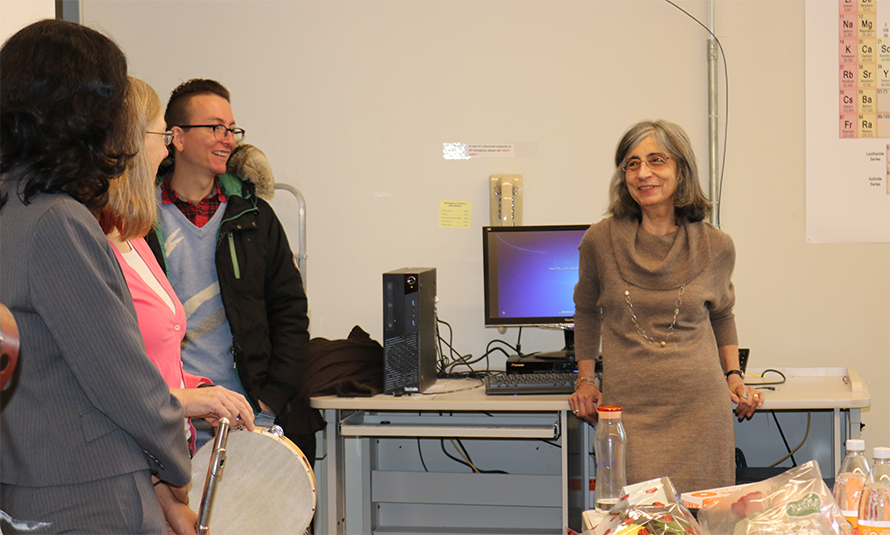How can we recognize and reward innovation in teaching?
Citations, and the metrics they generate, are the currency of academia. Faculty worry about h-factors, and journals about impact factors. Long ago, calculating these numbers was the work of statisticians; now they can be determined by any author or editor.
In addition to the influence these statistics have on careers, citations can open up a dialog between those citing and those cited. Whether the paper citing your work is acknowledging, refuting or building on your results, you know that your research is being read about and scrutinized. You may develop new ideas based on the papers that reference yours. This is a productive and progressive loop.
However, for one group of authors, citations fail to capture readership and, more importantly, don't allow for that dialog. Publications that describe curricular or pedagogical innovations are cited rarely, and their authors get little feedback about their impact.
Many years ago, two colleagues and I published a paper about a set of combined introduction to biology and introduction to chemistry courses. Eventually, I was approached by others thinking about such courses, but for a long time it felt like my colleagues and I were swimming against the stream, especially since some members of the departments thought that the combined course seemed like a waste of resources. It would have strengthened our argument for continuing the offering to hear that others thought it a worthwhile idea, and it might have improved our course cluster to know how other instructors were imagining their own integrated one.
I am not talking about discipline-based education research, known as DBER, or the scholarship of teaching and learning. Publications in these fields are referenced like any other type of research, although, for reasons discussed below, they still are cited less often than laboratory research. I am discussing papers that describe a new course, a new lab module, a case study or problem-based learning exercise, or any other teaching innovation that takes into account how students learn, what the noted educator Ernest Boyer called "scholarly teaching."
When instructors read these papers or find an innovation on a website such as CourseSource, they don't write a new paper that builds on the result — they introduce it in their own classes. This benefits their students but doesn't reflect back to the original authors or give them any credit.
Online metrics such as views and downloads address the question of credit to some extent. However, they do not encourage dialog between author and reader. The authors don't typically know how well the innovation worked in a new setting or how widely it spread in a department or institution.

Instructors reading and using publications about pedagogy are like physicians reading case studies — the paper may inform their own practice, but that rarely feeds back to the original author. To some extent, this is even true for DBER papers, whose findings do generate more research but also simply are incorporated into classroom methods.
Several years ago, I brainstormed with a group of librarians and educational technology types on how the relatively new field of altmetrics might improve both recognition and feedback for instructors publishing their teaching ideas. In 2013, we published a short paper in the journal Biochemistry and Molecular Biology Education about options for citation and recognition. There are, in fact, mechanisms to give credit to authors via some of these metrics, and instructors should build portfolios including these views, downloads, blog mentions and such when they are presenting credentials for reappointments, promotion and tenure.
For feedback, however, simple courtesy may work best. In light of our findings, I started citing the source of every assignment I used or adapted on the handouts to students and telling colleagues when I appreciated their exercises and case studies. This may not have a widespread effect, but it indicated to my own students that they should acknowledge all kinds of intellectual property in all settings, not just in formal publications. It also sometimes indicated to young scholars that I was aware of their work and could be called on for recommendations and reviews.
Some opportunities for feedback already exist, of course, at meetings for long-standing networks such as the POGIL Project (an acronym for process-oriented guided-inquiry learning), and they also occur informally at the small meetings organized by the American Society for Biochemistry and Molecular Biology and Gordon Research Conferences. Perhaps such feedback can be built formally into poster sessions and talks at meetings, both large and small, and websites with educational materials can include more space for dialog. All of this — plus any other ideas that recognize creative teaching activities alongside creative research activities — would benefit the profession.
Enjoy reading ASBMB Today?
Become a member to receive the print edition four times a year and the digital edition monthly.
Learn moreGet the latest from ASBMB Today
Enter your email address, and we’ll send you a weekly email with recent articles, interviews and more.
Latest in Opinions
Opinions highlights or most popular articles

The tortoise wins: How slowing down saved my Ph.D.
Graduate student Amy Bounds reflects on how slowing down in the lab not only improved her relationship with work but also made her a more productive scientist.

How pediatric cataracts shaped my scientific journey
Undergraduate student Grace Jones shares how she transformed her childhood cataract diagnosis into a scientific purpose. She explores how biochemistry can bring a clearer vision to others, and how personal history can shape discovery.

Debugging my code and teaching with ChatGPT
AI tools like ChatGPT have changed the way an assistant professor teaches and does research. But, he asserts that real growth still comes from struggle, and educators must help students use AI wisely — as scaffolds, not shortcuts.

AI in the lab: The power of smarter questions
An assistant professor discusses AI's evolution from a buzzword to a trusted research partner. It helps streamline reviews, troubleshoot code, save time and spark ideas, but its success relies on combining AI with expertise and critical thinking.

How AlphaFold transformed my classroom into a research lab
A high school science teacher reflects on how AI-integrated technologies help her students ponder realistic research questions with hands-on learning.

Writing with AI turns chaos into clarity
Associate professor shares how generative AI, used as a creative whiteboard, helps scientists refine ideas, structure complexity and sharpen clarity — transforming the messy process of discovery into compelling science writing.

